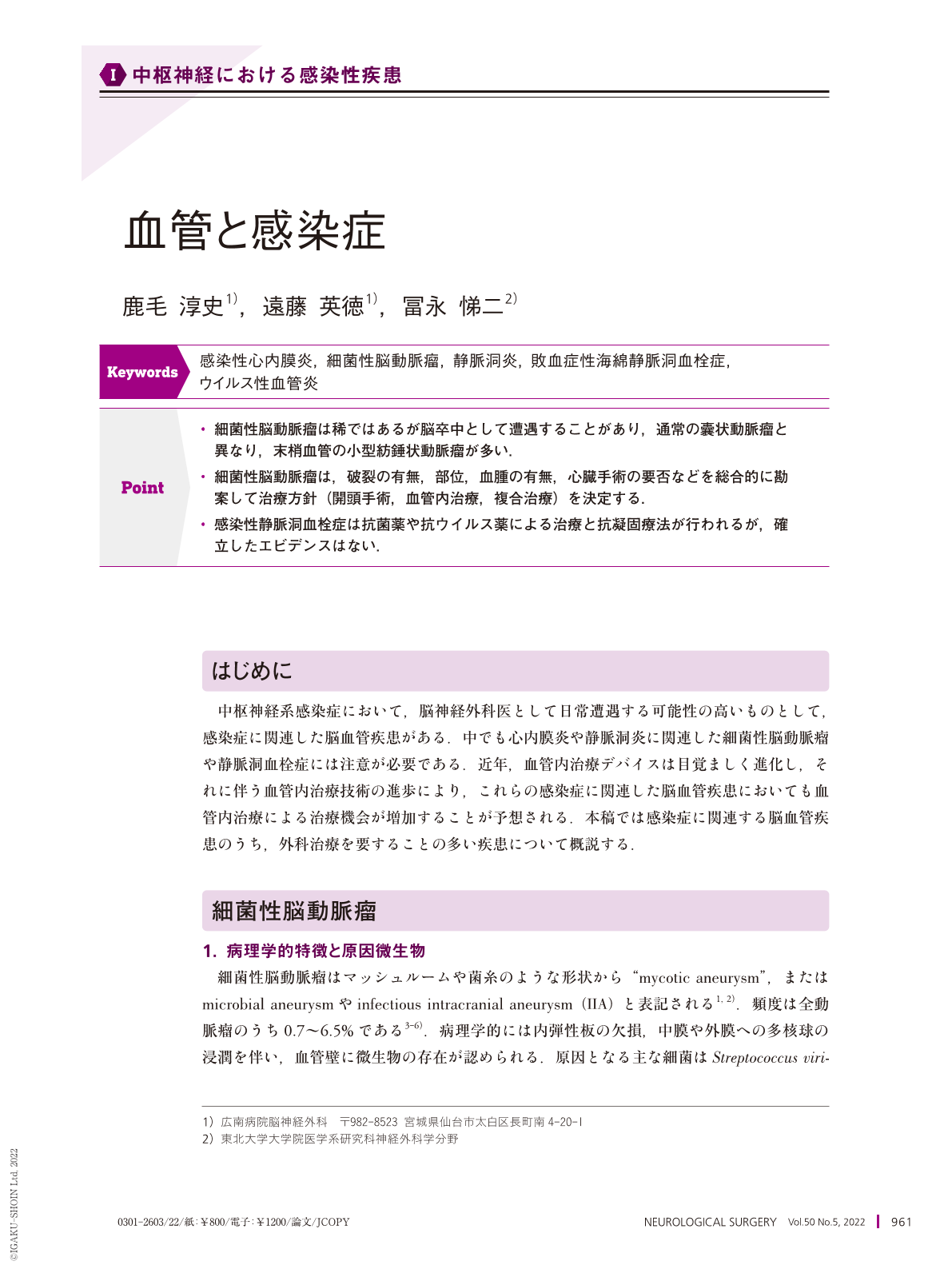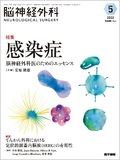Japanese
English
- 有料閲覧
- Abstract 文献概要
- 1ページ目 Look Inside
- 参考文献 Reference
Point
・細菌性脳動脈瘤は稀ではあるが脳卒中として遭遇することがあり,通常の囊状動脈瘤と異なり,末梢血管の小型紡錘状動脈瘤が多い.
・細菌性脳動脈瘤は,破裂の有無,部位,血腫の有無,心臓手術の要否などを総合的に勘案して治療方針(開頭手術,血管内治療,複合治療)を決定する.
・感染性静脈洞血栓症は抗菌薬や抗ウイルス薬による治療と抗凝固療法が行われるが,確立したエビデンスはない.
Infectious intracranial aneurysms(IIAs)are rare cerebrovascular complications of systemic infections induced by microbial infiltration and degradation of the arterial vessel wall. Prospective or population-wide studies of the epidemiology, natural history, or management of IIAs have not been conducted. In this study, we present the epidemiological and angiographical features, management, and outcomes of IIAs based on published case series and retrospective studies. Most IIAs were small in size(< 5 mm), with aneurysms located in the middle cerebral artery followed by the posterior cerebral artery. Endovascular interventions for IIAs have increased since coils, liquid embolic materials, and microcatheter became more sophisticated, allowing them to reach more distal branches. Open surgery is still required in cases with large clots or in cases involving branches feeding the eloquent areas, which cannot be sacrificed. These multimodal approaches for managing IIAs have achieved satisfactory results.
Septic cavernous sinus thrombosis is also a rare, life-threatening complication of head and neck infections. Several antibiotics and antivirals are used in combination with anticoagulants. However, no consensus has been reached because of a lack of randomized controlled trials and large population-based studies.

Copyright © 2022, Igaku-Shoin Ltd. All rights reserved.


